Introduction to Textured Wall Coatings
Textured wall coatings represent a prominent trend in both interior and exterior design, offering a unique blend of aesthetic appeal and functional benefits. Unlike traditional wall finishes, which are typically smooth and uniform, textured coatings add depth and character to surfaces, transforming the atmosphere of any space. These coatings can range from subtle finishes that add a hint of dimension to bold, dramatic treatments that serve as a focal point, making them an increasingly popular choice among homeowners and interior designers alike.
One of the key advantages of textured wall coatings is their ability to enhance the visual complexity of a room. With a wide variety of textures available, including stucco, plaster, and even the traditional mithila paints, designers can achieve various looks that cater to individual styles. The innate versatility allows these coatings to adapt to diverse decor themes, from rustic and traditional to sleek and modern. Additionally, the incorporation of materials like natural pigments in mithila paints provides an eco-friendly option that not only beautifies spaces but also honors cultural heritage.
Beyond their aesthetic qualities, textured wall coatings also offer practical advantages. For instance, their unique surfaces can help to hide imperfections and irregularities in the underlying walls, contributing to a more polished overall appearance. Furthermore, certain textures can improve insulation and soundproofing, making them suitable for both residential and commercial applications. As a result, many architects and designers are increasingly integrating textured wall coatings into their projects, recognizing the dual benefits of enhanced visuals alongside improved functionality.
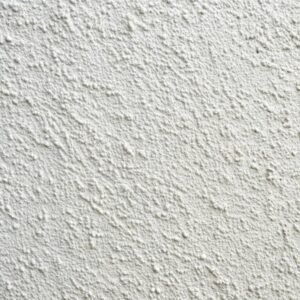
Types of Textured Wall Coatings
Textured wall coatings come in various styles and finishes, each offering unique characteristics suited for different applications. One of the most popular types is stucco, known for its durability and weather resistance. Typically composed of cement, sand, and lime, stucco provides a classic, rustic appearance. It is applied in a thick layer and can be manipulated to create various finishes, from smooth to highly textured. Stucco is ideal for exterior applications in regions prone to harsh weather, adding both beauty and protection to structures.
Another common texture is the knockdown finish, which lends a sophisticated, mottled effect to interiors. This coating is achieved by applying a joint compound to the wall and then lightly knocking it down with a trowel or knife, creating a unique pattern. Knockdown finishes can vary widely in appearance, making each application unique. It is commonly used in living rooms and dining spaces, providing visual interest without being overly aggressive.
A more casual look is offered by popcorn ceilings and walls, which became popular in the mid-20th century. The application involves spraying a mixture onto the surface, resulting in a bumpy, textured finish. While primarily associated with ceilings, it has also found its way onto walls, providing a soft, acoustic-friendly surface. However, it is less common today as design trends shift towards smoother finishes.
In addition to these, there are many synthetic coatings on the market that mimic traditional styles while offering enhanced durability. For instance, mithila paints can be utilized to create textured wall coatings that reflect cultural artistry while offering practical benefits such as moisture resistance and ease of maintenance. These innovative solutions provide homeowners and businesses with versatile aesthetics that complement various architectural styles.
Each type of textured wall coating not only serves an aesthetic purpose but also enhances the functionality of the walls, preventing wear and tear while improving overall visual appeal.
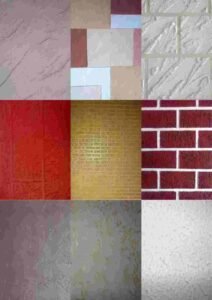
Benefits of Using Textured Wall Coatings
Textured wall coatings have increasingly gained popularity due to their numerous advantages. One of the most significant benefits of these coatings is their ability to enhance the aesthetics of any space. Textured finishes can transform plain walls into visually engaging surfaces, adding depth and character. Whether it’s the traditional appeal of Mithila paints or modern textured options, a wide variety of styles exists to suit diverse preferences. This versatility allows homeowners and designers to create unique environments tailored to individual tastes.
Another essential advantage of textured wall coatings is their improved insulation properties. These coatings can help regulate indoor temperatures by providing a layer of thermal insulation, which, in turn, reduces energy costs by minimizing the need for heating or cooling systems. This energy efficiency not only contributes to reduced utility bills but also promotes a more sustainable approach to home and office design.
Moreover, textured surfaces can provide soundproofing capabilities. The irregularities in the texture can help absorb sound, leading to quieter indoor environments—a crucial benefit for homes in noisy areas or commercial spaces requiring privacy. This sound dampening not only enhances comfort but also fosters better productivity in workspaces.
Textured wall coatings are also adept at concealing imperfections on walls. Flaws such as cracks, stains, or uneven surfaces can be effectively covered by textured finishes, reducing the need for extensive wall repairs. Additionally, maintenance is often simplified, as textured surfaces are typically more durable and resistant to wear and tear. They can withstand the rigors of time better than traditional paint, making them a sound investment for those seeking long-lasting solutions.
In essence, the advantages of using textured wall coatings encompass aesthetic improvement, insulation, sound absorption, and durability, making these coatings an excellent choice for enhancing both the functionality and appearance of indoor spaces.
Choosing the Right Textured Wall Coating for Your Space
Selecting the appropriate textured wall coating for your space is essential to achieving the desired aesthetics while ensuring functionality. A variety of factors should be considered during this process, starting with the room’s purpose. For instance, high-moisture areas such as bathrooms or kitchens may benefit from textured coatings that are resistant to mold and mildew. Vinyl or acrylic options are often preferable in such environments, as they offer durability and resistance to wear.
The desired aesthetic is another crucial consideration. Textured wall coatings, including popular styles such as stucco, can achieve varying visual effects. A rustic look may be enhanced through the use of coarse textures, whereas a more contemporary appearance might be realized with smoother finishes. Consider the existing decor and color palette of the room when selecting your textured paint. Opting for colors that harmonize with furniture, fixtures, and overall design can greatly enhance the atmosphere of the space.
Budget constraints also play an important role in the selection process. While premium textured wall coatings can offer superior durability and aesthetic appeal, there are numerous affordable options on the market that can deliver satisfactory results. It’s advisable to conduct thorough research and obtain samples when possible, to ensure the selected product meets both your aesthetic requirements and budget limits.
Finally, understanding the compatibility of various materials with specific environments is fundamental in making an informed decision. For example, textured coatings with high breathability are preferable in areas subject to humidity, while more robust options may be needed in heavily-trafficked spaces. By taking the time to consider these factors, homeowners and designers can achieve a stunning and functional finish with their choice of mithila paints or other textured wall coating options, ensuring that each space is personalized and meets the necessary requirements.
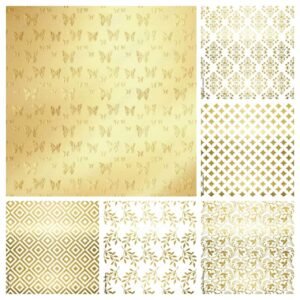
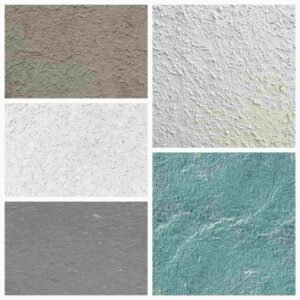
Application Techniques for Textured Wall Coatings
Textured wall coatings offer a unique aesthetic appeal while enhancing the functionality of interior and exterior surfaces. Applying these coatings effectively requires an understanding of several techniques, primarily including spray, roll-on, and trowel methods. Each technique has distinct advantages, catering to varying project requirements.
The spray method is often preferred for larger areas and intricate designs. This technique involves using a spray gun to apply the mixture of paint and texture material evenly across the surface. The tools needed for this method include an air compressor, spray gun, and protective gear such as masks and goggles. To begin, prepare your surface by cleaning it thoroughly and applying a primer if necessary. Once set up, adjust the spray pattern and distance to ensure an even coat, moving in a steady motion to achieve the desired texture.
For smaller areas or detailed work, the roll-on technique can be quite effective. This method utilizes a roller to apply the textured wall coatings, which can be a quicker option for flat surfaces. Essential tools include a textured roller, paint tray, and extension pole. Preparation remains crucial; after priming the surface, dip the roller into the texture material and roll it onto the wall. Frequently reload the roller and apply in overlapping strokes to prevent streaks, ensuring that the texture is uniform across the surface.
Lastly, the trowel method is ideal for creating pronounced textures and patterns. This method employs a trowel or putty knife to spread the composite onto the surface. Before starting, make sure the wall is at a suitable temperature and dry. After gathering the right materials, scoop a portion of the texture onto the trowel and press it onto the wall in a technique that suits your desired aesthetic, be it smooth or rugged.
Safety precautions, such as wearing suitable masks and protecting surrounding areas, are paramount during any application. By carefully choosing the method and following these guidelines, applying textured wall coatings will yield professional results, enhancing both the look and feel of your space.
Maintenance and Care for Textured Walls
Proper maintenance of textured walls is essential to preserve the aesthetics and functionality of these surfaces. Different textures, such as those resembling mithila paints or other decorative finishes, require tailored cleaning methods to avoid damage while maintaining their appearance. For most textured coatings, regular dusting with a soft cloth or a duster is recommended to prevent dirt build-up. In cases where residues accumulate, using a gentle cleaning solution mixed with water can help. Always test the solution on a small area first to ensure it does not affect the paint.
When it comes to textured wall coatings, it is crucial to be vigilant regarding signs of wear and tear. Look for peeling edges, fading colors, or any accumulation of moisture that may lead to mold growth. These indicators suggest that your textured wall needs immediate attention to prevent further deterioration. Areas that frequently experience high traffic or exposure to moisture, such as bathrooms and kitchens, are often more susceptible to wear. Regular inspections will help identify aged areas that might warrant reapplication or touch-ups.
In instances where touch-ups are necessary, it’s advisable to use the same type of paint or texture application that was originally used. This ensures consistency in both appearance and texture. Whether utilizing mithila paints or another decorative finish, having the right materials on hand is crucial.
When the time comes for a complete reapplication, thoroughly cleaning the surface before any new coatings are applied will enhance adhesion and longevity. To retain the vibrancy and unique characteristics of your textured walls, a routine maintenance schedule can significantly extend their life, allowing you to enjoy their visual appeal for years to come.
Trends in Textured Wall Coating Designs
In recent years, textured wall coatings have gained popularity for both aesthetic and functional purposes, transforming the way spaces are designed and experienced. The latest trends reflect a harmonious blend of color palettes, finishes, and materials that elevate interior and exterior environments. Designers are increasingly opting for natural materials and earthy tones, embodying a timeless appeal. These choices resonate with contemporary themes, promoting a connection to nature while enhancing the visual intrigue of surfaces through Mithila paints, which are known for their intricate designs and depth.
Additionally, the use of bold colors continues to be significant in textured wall coatings. Rich, saturated hues like deep blues, vibrant greens, and warm terracotta are making statements in living spaces. Such colors add warmth and personality while also providing depth to walls that might otherwise feel flat or uninviting. Finishes that mimic the texture of natural materials, such as stone or stucco, are particularly popular, as they combine the visual drama of texture with the durability of modern coatings, ensuring that such designs remain both suitable for high-traffic areas and stunning in appearance.
Furthermore, texture is being integrated actively into both residential and commercial projects, creating a seamless transition between functionality and aesthetic appeal. For instance, in commercial settings, textured wall coatings are being employed not just for their beauty but also for their practical benefits, such as sound absorption and improved resilience. Residential designers are incorporating textured finishes as a way to create focal points in rooms, such as accent walls, which draw the eye and set the tone for the rest of the interior design.
Overall, the evolution of textured wall coatings underscores a broader movement towards innovation in design, where aesthetics do not compromise functionality. By integrating various textures and finishes, including those influenced by Mithila paints, today’s designers are effectively enriching the environments in which we live and work.
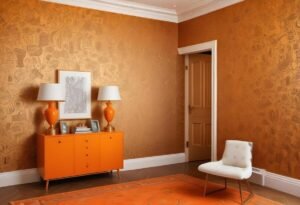
Case Studies of Textured Wall Coatings Implementation
Textured wall coatings have gained popularity for their ability to enhance both the aesthetic appeal and functionality of a space. Several real-life case studies illustrate the successful application of these coatings, particularly mithila paints, in various residential and commercial settings. These examples demonstrate the transformative potential of textured finishes.
One notable case involved a traditional family home in Patna, which was experiencing significant wear and tear on its walls. The homeowners sought a solution that would not only rejuvenate their living space but also reflect their cultural heritage. By employing mithila paints, the interior designer introduced vibrant colors and intricate patterns reminiscent of the Mithila art style.
The transformation was remarkable; before the application, the walls appeared dull and lifeless, but following the application of textured wall coatings, they became a focal point of the home. Quotes from the homeowners highlighted their satisfaction: “The walls now tell a story; our home feels alive.” Photos showcased the stark contrast, emphasizing the visual appeal enhanced by the textured finishes.
Another compelling example was a contemporary office space in New Delhi. The challenge here was to create a professional yet inviting atmosphere for employees and visitors. Using a modern approach to textured coatings, the design team opted for a sleek finish emulating natural materials. The result was a sophisticated environment further enhanced by the clever use of mithila paints, which added bursts of color without overwhelming the overall design.
Feedback from employees confirmed an increase in morale and productivity. “Our workspace feels more cohesive and energizing,” one employee remarked. The case studies clearly illustrate that the application of textured wall coatings, particularly with the integration of culturally inspired mithila paints, can resolve various design challenges while significantly upgrading the aesthetics and functionality of any space.
Conclusion: Embracing Texture in Design
Textured wall coatings have emerged as a significant element in contemporary interior and exterior design, profoundly influencing aesthetics and functionality. Throughout this guide, we have explored the various types of textured coatings, including their composition, application methods, and the distinct advantages they offer. The versatility of textures allows designers and homeowners to unlock their creativity, giving them the ability to transform ordinary spaces into captivating environments.
One of the key benefits of using textured wall coatings, such as mithila paints, lies in their ability to enhance visual interest. By adding dimension and depth, these coatings can create a focal point in any room, drawing the eye and enriching the overall decor. Furthermore, textured finishes can influence the mood and atmosphere of a space, making them a powerful tool for designers seeking to evoke specific feelings or themes.
Moreover, these coatings also serve practical purposes. They can improve durability and help safeguard surfaces from the wear and tear of daily life. Textured wall coatings often exhibit increased resistance to stains, moisture, and impact, making them an ideal choice for high-traffic areas or spaces exposed to environmental factors. As we have discussed, mithila paints and similar coatings are particularly beneficial for their breathability and eco-friendliness, appealing to those who prioritize sustainability in their design choices.
In conclusion, embracing texture in design is not merely about aesthetics; it is about enriching the functionality and experience of the spaces we inhabit. Whether renovating a home or designing a new commercial space, considering the addition of textured wall coatings can significantly enhance both beauty and practicality. We encourage readers to explore their options, experiment with different textures, and consider incorporating these innovations into their projects for a transformative impact.
